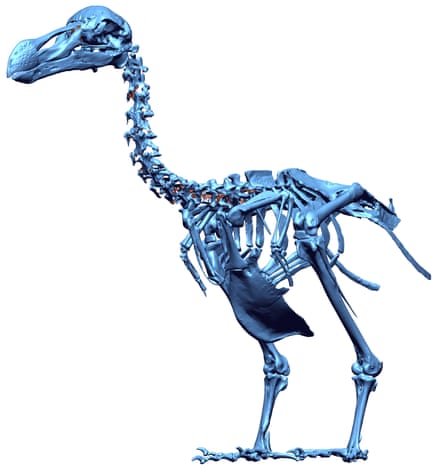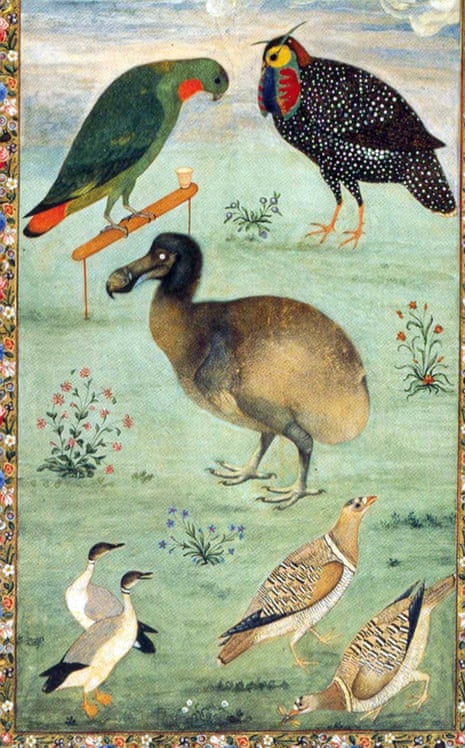“You Dutch people killed the dodo. And now that they are extinct, you come back for their bones as well!” A thing you might hear when you are a Dutch palaeontologist excavating dodo bones on Mauritius. It is an understandable sentiment, but a wrong one.
Despite its iconic status, we have very few clues about where the dodo came from, and how and when it arrived on the remote island of Mauritius, located about 500 km east of Madagascar. DNA evidence indicates that the dodo’s closest living relative is the Nicobar pigeon, a glossy-feathered ground-dwelling pigeon from Southeast Asia. The dodo’s ancestor may have island-hopped from Southeast Asia all the way down to the isolated Mascarene Islands, but the details of its journey remain fuzzy at best. After millions of years of idyllic island life, humans, in the form of Dutch sailors eager to stretch their legs after months on sea, arrived on Mauritius in 1598. As is often the case, catastrophe ensued. Less than a century after the first humans set foot on the island, the dodo had left the stage.
Despite the popular belief that dodo meat was inedible because of its revolting taste, dodos were eaten by these early settlers, and even considered to be a delicacy by some. However, there is no evidence to support the idea that dodos were eaten to extinction. In fact, analyses of 17th century settlement refuse assemblages show a focus on introduced mammals and a lack of dodo remains, indicating that dodos did not form a significant part of the settlers’ diet.
In order to really understand the extinction of the dodo, we need to look beyond the humans, to the suite of non-native species that followed closely behind in their footsteps and set into motion an ecological disaster that resulted in the dodo’s swan song. The ubiquitous ship-rats, the pigs, goats and Rusa deer brought along as food, and the macaques brought along as pets from Southeast Asia; these were the species that, once set loose in the island’s pristine ecosystem, wreaked havoc on its members who had since long lost their defenses against predators. Dodo chicks and eggs were eaten, nests destroyed, and vegetation disturbed. As a flightless, ground-nesting bird, the dodo never stood a chance. Eventually, all that remained was the image of a gluttonous, clumsy bird, destined for extinction.

It is time for a reappraisal of the dodo. In 2005, a Dutch team of archeologists set out to take cores for pollen samples in a swampy area, Mare aux Songes, in the southeastern part of Mauritius. They got more than they asked for, as they rediscovered a dodo mass grave that had been partially excavated in 1865, but had slowly faded back into obscurity afterwards. This rediscovery initiated new research efforts into the ecosystem of the dodo and its ultimate demise. Now, ten years after that fortuitous discovery, the picture that is emerging from geological, hydrological, and palaeontological evidence is one of an ecosystem characterized by climatic instability and resilience. Extreme weather events, such as cyclones and droughts were common. The drought that happened 4100 years ago, and that is documented in the Mare aux Songes sediments, caused animals to flock to this area in search of fresh water, and resulted in mass mortalities across the Mauritian ecosystem. Yet the ecosystem bounced back, and the dodo survived.
A new study of dodo skeletal anatomy that is about to be published (the first one since 1866 and based on the only two skeletons of individuals dodo that have been under our noses all this time but somehow evaded scientific study), shows that the dodo was not just a scaled-up version of your average pigeon. Instead, its wings were reduced, its legs strengthened, and it possessed a skull that was so different from the general pigeon layout that it was at times mistaken for a vulture. This was a resilient animal highly adapted to island life, which, idyllic as it may sound, came with climatic conditions that could severely impact the amount of food available. The evidence gathered over the last decade has given us a unique window into the ecosystem of the dodo, and forces us to reconsider our cherished image of the dodo as a sitting duck. More importantly, as its story is closely tied to the resilient yet fragile nature of insular ecosystems, it forces us to rethink conservation strategies in times of increasing environmental stress.
The dodo is dead, long live the dodo.

Comments (…)
Sign in or create your Guardian account to join the discussion